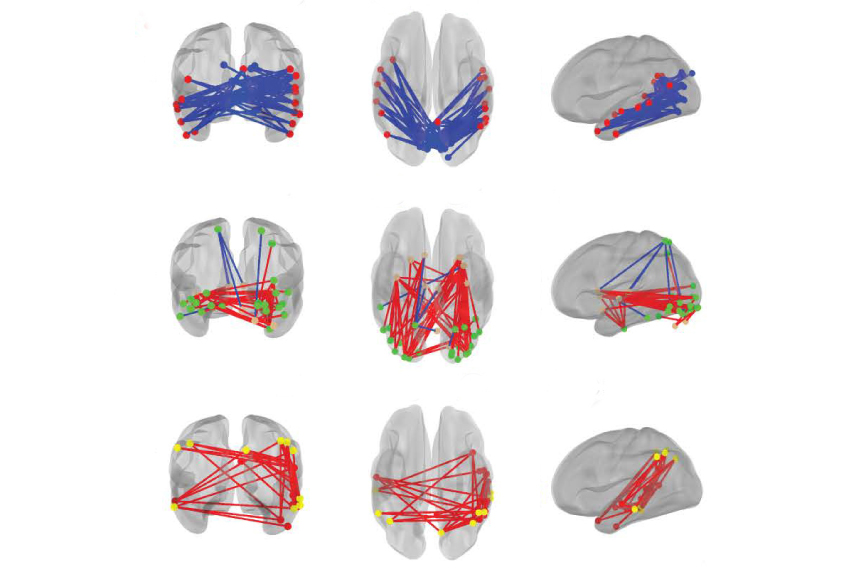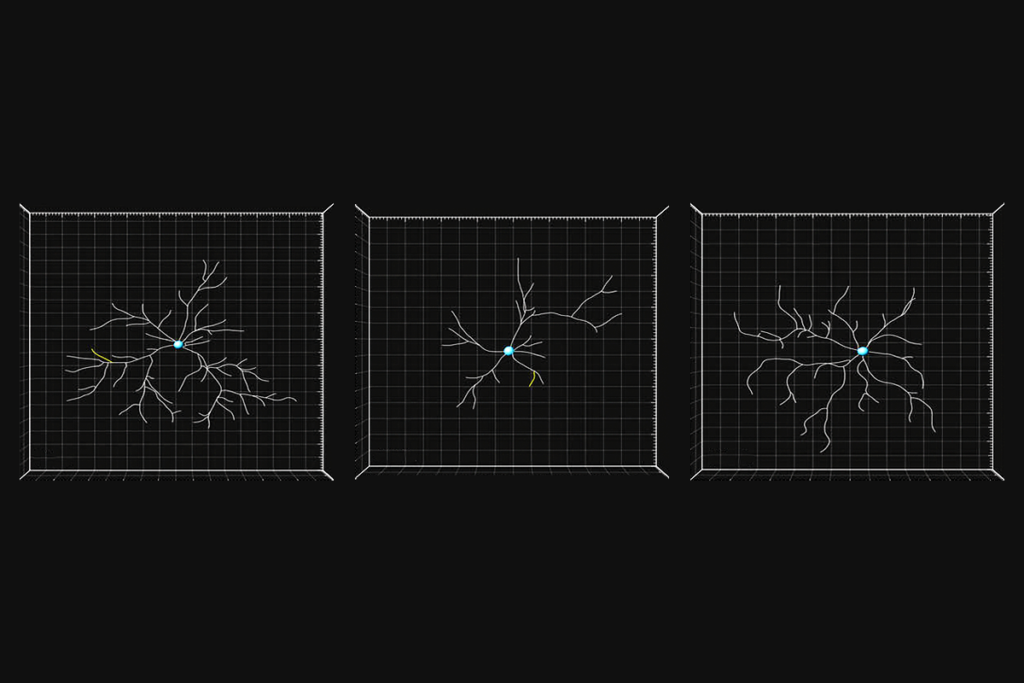
Repetitive behaviors tied to brain activity patterns in toddlers
Children who have repetitive behaviors, a core autism trait, may show particular patterns of brain activity as early as 1 year of age.
Children who have repetitive behaviors, a core autism trait, show particular patterns of brain activity as early as 1 year of age, according to a new study1.
Autistic people have brain activity patterns that differ from those of their typical peers. These differences emerge early in life: A study last year showed that brain activity patterns in 6-month-olds can be used to predict an autism diagnosis at age 2.
But few studies have probed the functional connectivity — synchronous activity between pairs of brain regions — that underlies repetitive behaviors.
“We believe that this is one of the first, if not the first, studies of functional brain connectivity in relationship to restricted and repetitive behaviors in the first years of life,” says lead investigator John Pruett, associate professor of psychiatry at Washington University in St. Louis, Missouri.
The findings may help clinicians spot toddlers likely to benefit from early intervention for autism, Pruett says.
They also shed new light on how brain regions in autistic people interact. For example, the study highlights increased connectivity within the superior temporal sulcus (STS) — a region involved in recognizing facial expressions, body movements and other aspects of social interaction; the STS is thought to be impaired in autism.
Social-communication difficulties are also considered to be a core trait of autism, but they are thought to evolve independently from repetitive behaviors. The new results suggest that both involve the STS, however.
“That is interesting,” says Ralph-Axel Müller, professor of psychology at San Diego State University in California, who was not involved in the research. “It could suggest why [autism] includes both deficits in social communication and restricted and repetitive behaviors.”
Pair patterns:
Pruett’s team scanned the brains of 167 toddlers aged 12 or 24 months while they slept, using functional magnetic resonance imaging; they evaluated 38 of the children at both ages. The children are part of the Infant Brain Imaging Study, an effort to track brain development in babies at risk for autism.
The researchers looked for 26,335 possible functional connections involving 230 brain regions. The children’s caregivers filled out a questionnaire that measures autistic behaviors in young children.
The researchers searched for links between patterns of brain connectivity and several types of repetitive behaviors: stereotyped behaviors (hand-flapping, spinning), rituals at specific times or places, restricted interests (trains, SpongeBob SquarePants) and self-injurious behaviors.
Different forms of repetitive behavior are associated with distinct connectivity patterns among pairs of brain regions, and these patterns depend on age, the team found.
For example, at 12 months, stereotyped behaviors and rituals are linked to decreased connectivity between visual brain regions and areas involved in daydreaming and rumination. At 24 months, restricted interests are associated with increased connectivity between daydreaming and attention networks. The results were published in October in Biological Psychiatry.
“This is atypical,” Pruett says, but consistent with previous findings in autism. The daydreaming and attention networks are not active at the same time in most people. Yet previous research in autistic children suggests that unusual connectivity between these two networks underlies rigid behaviors and restricted interests2. “This story kind of fits,” he says.
Still, brain activity data are notoriously difficult to interpret.
“You can probably make any set of networks make sense,” says Emily Jones, lecturer at Birkbeck, University of London, who was not involved in the research. It’s also unclear why the brain regions associated with repetitive behaviors differ by age, she says.
Pruett agrees that the results are preliminary. “We’re very excited about what’s in this paper, but this needs to be replicated in an independent sample,” he says.
References:
Recommended reading
Explore more from The Transmitter

Probing the link between preterm birth and autism; and more



